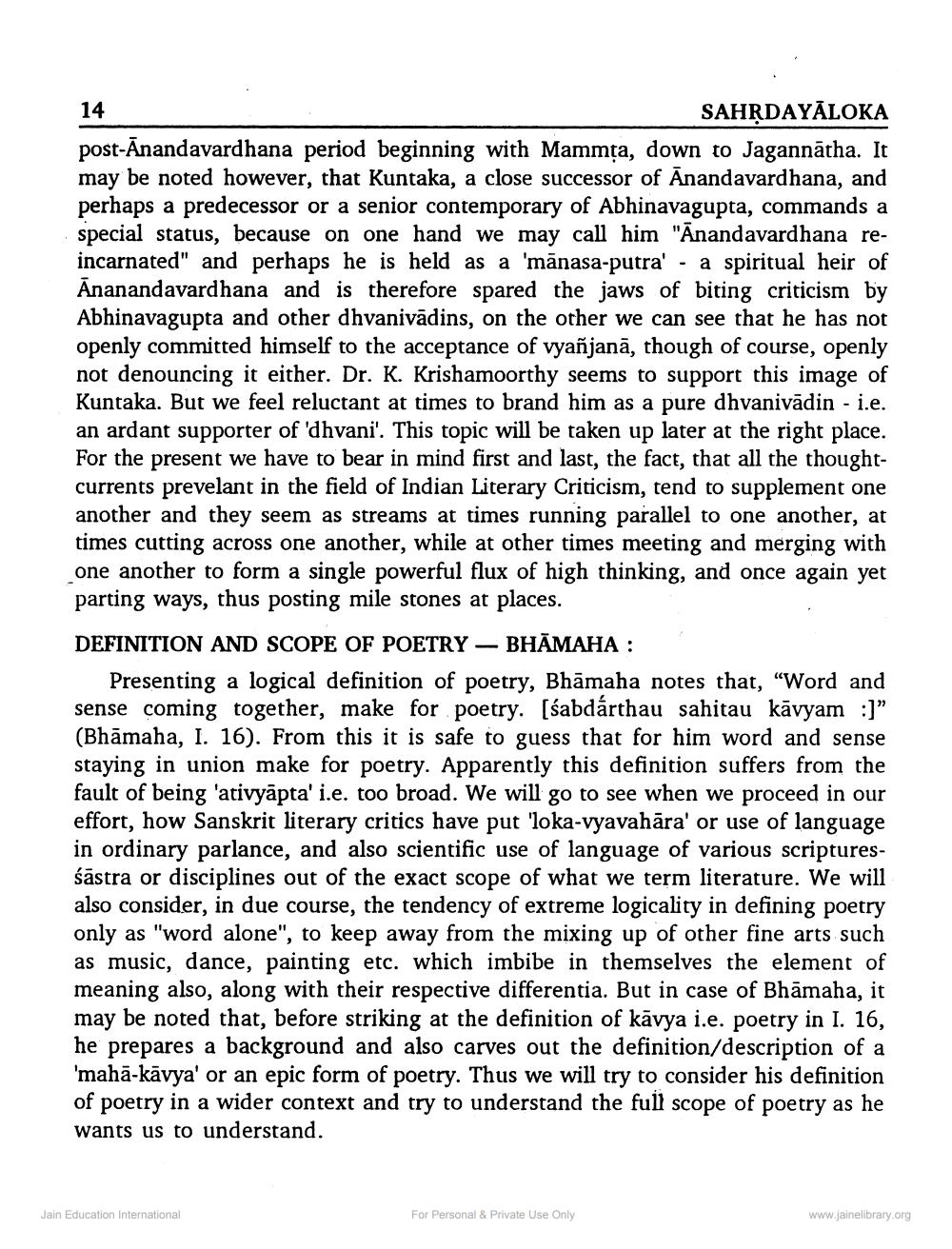________________
14
SAHRDAYĀLOKA post-Ānandavardhana period beginning with Mammța, down to Jagannātha. It may be noted however, that Kuntaka, a close successor of Anandavardhana, and perhaps a predecessor or a senior contemporary of Abhinavagupta, commands a special status, because on one hand we may call him "Anandavardhana re incarnated" and perhaps he is held as a 'mānasa-putra' - a spiritual heir of Ananandavardhana and is therefore spared the jaws of biting criticism by Abhinavagupta and other dhvanivādins, on the other we can see that he has not openly committed himself to the acceptance of vyañjanā, though of course, openly not denouncing it either. Dr. K. Krishamoorthy seems to support this image of Kuntaka. But we feel reluctant at times to brand him as a pure dhvanivādin - i.e. an ardant supporter of 'dhvani'. This topic will be taken up later at the right place. For the present we have to bear in mind first and last, the fact, that all the thoughtcurrents prevelant in the field of Indian Literary Criticism, tend to supplement one another and they seem as streams at times running parallel to one another, at times cutting across one another, while at other times meeting and merging with one another to form a single powerful flux of high thinking, and once again yet parting ways, thus posting mile stones at places. DEFINITION AND SCOPE OF POETRY – BHĀMAHA :
Presenting a logical definition of poetry, Bhāmaha notes that, “Word and sense coming together, make for poetry. [śabdárthau sahitau kāvyam :]" (Bhāmaha, I. 16). From this it is safe to guess that for him word and sense staying in union make for poetry. Apparently this definition suffers from the fault of being 'ativyāpta' i.e. too broad. We will go to see when we proceed in our effort, how Sanskrit literary critics have put 'loka-vyavahāra' or use of language in ordinary parlance, and also scientific use of language of various scripturesśāstra or disciplines out of the exact scope of what we term literature. We will also consider, in due course, the tendency of extreme logicality in defining poetry only as "word alone", to keep away from the mixing up of other fine arts such as music, dance, painting etc. which imbibe in themselves the element of meaning also, along with their respective differentia. But in case of Bhāmaha, it may be noted that, before striking at the definition of kāvya i.e. poetry in I. 16, he prepares a background and also carves out the definition/description of a 'mahā-kāvya' or an epic form of poetry. Thus we will try to consider his definition of poetry in a wider context and try to understand the full scope of poetry as he wants us to understand.
Jain Education International
For Personal & Private Use Only
www.jainelibrary.org




